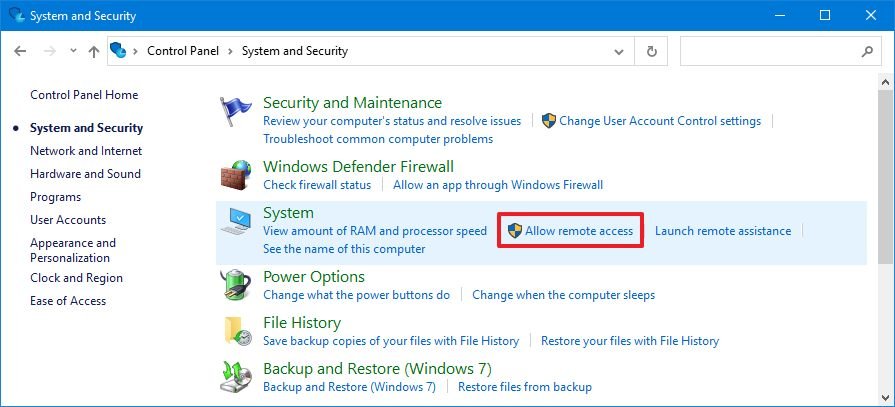Windows Remote Assistance allows someone (or helper) you trust to take over your PC and provide remote technical support. It’s something similar to TeamViewer or UltraVNC. This tutorial will show you different ways to open Remote Assistance in Windows 10 / 8 / 7.
Method 1: Open Windows Remote Assistance from Run Command

Quick Assist is a Windows 10 application that enables two people to share a device over a remote connection. By allowing a trusted friend, family member, or Microsoft support person to access your computer, you can troubleshoot, diagnose technological issues, and receive instruction on your computer. Follow these steps to disable Quick Assist on your Windows 10 PC: 1 – Press the Windows + S key combination to open a Search box. 2 – Type control panel into the Search box, then select Control Panel from the list of search results. 3 – Click System and Security. 4 – Click the the Allow remote access link that’s located in the.

Press the Windows key and the R key at the same time to open the Run command box, type in msra and hit Enter.
Win 10 Home Remote Assistance
This should open up Windows Remote Assistance in no time.

Windows 10 Home Remote Assistance Center

Method 2: Open Windows Remote Assistance via Search
Just click the Start button and directly type “remote assistance“. The search box will show up and deliver the results. Click the option “Invite someone to connect to your PC and help you, or offer to help someone” to launch Windows Remote Assistance.
Method 3: Open Windows Remote Assistance from Control Panel
Open the Control Panel. Type “remote” into the Search box in the upper right corner of the window, and then click the link labelled “Invite someone to connect to your PC and help you, or offer to help someone else“.
PEARL DROP Liquid Hand Soap Kess Industrial Products, Inc. 8613 NW 66 Street Miami, FL. 33166 (305) 592-1850 April 20, 2016 SECTION 2. HAZARDS IDENTIFICATION CAUTION: MAY CAUSE EYE IRRITATION HEALTH FLAMMABILITY REACTIVITY 1 0 0 EYES: Moderately irritating to eyes. SKIN: No known significant effects or critical hazards. Trade name: Lemon-Drop (Contd. Of page 1) 2.2 Label elements Labelling according to Regulation (EC) No 1272/2008 The product is additionally classified and labelled according to the Globally Harmonized System within the United States (GHS). The product is classified and labelled according to the CLP regulation. Hazard pictograms GHS05. Sds drop. Trade Name: DROP DEAD SDS #: Revision # 1 Page 2 of 6 SDS ID: SDS02660 Revision Date 6240. Safety Data Sheet DROP DEAD Suitable fire extinguishing media: Use water spray, fog or foam. Specific hazards arising from the chemical: Flammable liquid. In a fire or if heated, a pressure increase will occur and the container may burst, with. Standard (29 CFR 1910.1200), this SDS contains valuable information critical to the safe handling and proper use of the product. This SDS should be retained and available for employees and other users of this product. This chemical is a pesticide product registered by the Environmental Protection Agency and is subject to certain labeling. We would like to show you a description here but the site won’t allow us.
Method 4: Create a Desktop Shortcut to Start Windows Remote Assistance
Daisetz teitaro suzuki. If you need to provide remote technical support to your customers frequently, it’s a good idea to create a desktop shortcut to start Windows Remote Assistance. Follow these steps:
- Right-click an empty area on your desktop, and select New -> Shortcut from the context menu.
- Type “%windir%system32msra.exe” into the location box, and click Next.
- Give the shortcut a name, and click Finish.
A new shortcut appears on your desktop. Double-click or tap it, and it will open the Windows Remote Assistance app immediately.
Related posts:
